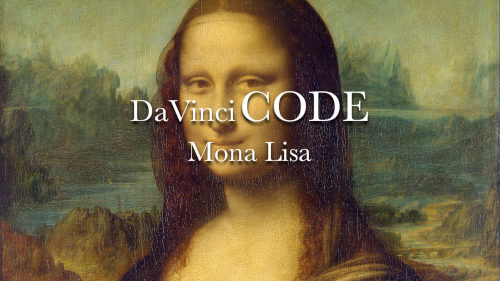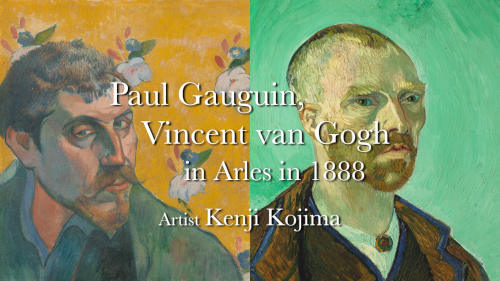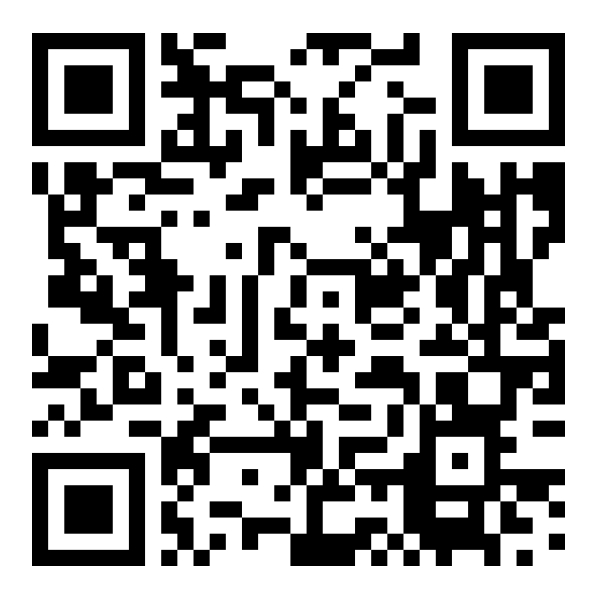Art Talk Podcast: Kenji Kojima's
Click on the image to select a video.


Art Talk Podcast: The Experiment of the Period of Great Change. / 17:40 / 2025
Other language subtitles: Go to YouTube.
- Art Talk Podcast: Participating in the Media Art Festivals -
• Internationales Digitalkunst Festival 2025, Stuttgart, Germany, November 8, 14 & 28, 2025
• Goes-Art / On Screen Festival, Season 03: from September 21, 2025, Vienna, Austria
This podcast covers these four projects.
1.


1. Begins with Chaos - Lascaux / 5:00 / 2025
2.


2. A Sunday Afternoon on the Island of La Grande Jatte / 4:00 /2024
3.


3. Da Vinci Code / Mona Lisa / 4:00 / 2024
4.


4. Paul Gauguin, Vincent van Gogh in Arles in 1888 / 8:30 / 2025
The transcript and subtitles version of the podcast.
AI Art Talk Podcast: It covers two projects
Binary Interpretation of
Paul Gauguin, Vincent van Gogh in Arles in 1888
and Begins with Chaos - Lascaux
- Latest Binary Interpretation Projects -
Binary Interpretation The 108,528 Pixel Colors
from His Last Painting were Scattered Randomly

5:00 / 2025
Binary Interpretation The 162,000 Pixel Colors
Thunder God & Wind God

4:50 / 2025
Binary Interpretation The 100,284 Pixel Colors
Flag: After Japser Jones

5:00 / 2025
Binary Interpretation
The Last Supper - Leonardo Da Vinci

7:00 / 2025
Binary Interpretation
Washington Crossing the ICE River

6:00 / 2025
|
The videos are free to share and download.
You can show it without permission. If you appreciate the video as art, you can donate any amount from $1.00 to the artist. Even if you don't approve, you can keep it. However, as you've already determined, it lacks artistic value. Download Videos: 1920x1080 • Art Talk Podcast: The Experiment of the Period of Great Change • Begins with Chaos - Lascaux • A Sunday Afternoon on the Island of La Grande Jatte • Da Vinci Code / Mona Lisa • Paul Gauguin, Vincent van Gogh in Arles in 1888 • The 108,528 Pixel Colors from His Last Painting were Scattered Randomly • The Last Supper - Leonardo Da Vinci • Washington Crossing the ICE River • ONE-TIME PAD / STREAM, Painting by Kenji Kojima  This site's videos are licensed under
This site's videos are licensed underCreative Commons Attribution 4.0 International License. Credit must be given to the creator.  Please Click and Support Kenji Kojima's Artworks.
Please Click and Support Kenji Kojima's Artworks. Scan and Donate.
Scan and Donate.日本からのドネーションはここをクリック。 日本から任意の金額のドネーションはできません。 Show: Japanese / 日本語
Hide: Japanese / 日本語
アーティスト・ステートメント: 小島健治は、彼の開発した画像を音に変換するフリーウェア「RGB MusicLab」や、ワンタイムパッドの原理を用いた暗号化プロジェクトなどを通して、知覚、デジタルデータ、そしてメディアの交差点を探求しています。彼の作品は、XOR演算を用いて画像を判読不能なモザイクにエンコードすることが多く、正しいキーでのみ復元可能です。小島はこのプロセスを、感覚を通して混沌から意味を引き出す人間の知覚のメタファーと捉えています。彼はNFTアートに懐疑的な見方を示し、デジタルアートの所有権よりも複製可能性を重視しています。キャリアを通して、小島はフリーウェア開発の哲学に影響を受けており、メディアアートは所有権のみに焦点を当てるのではなく、未来を指針するものであるべきだという信念を育んでいます。 このポッドキャストについて: このポッドキャストでは、アーティスト小島健治が最近開発した4つのデジタルプロジェクトについて、AIを活用したディスカッションを特集しています。会話中は、これらのプロジェクトの無音映像が背景に投影されます。プロジェクトは、ラスコーの先史時代の洞窟壁画、スーラのグランド・ジャット、ダ・ヴィンチのモナ・リザ、そしてゴッホとゴーギャンのアルルでの絵画を、バイナリデータとアルゴリズムを用いてデジタル解釈したものです。今日、有史前の洞窟壁画から現在の全ての画像まで画面上のピクセルはすべて、バイナリアルゴリズムによって制御されています。ポッドキャストでは、プロジェクトの背景をインタラクティブに解説して、21世紀までの広大な美術史を垣間見ながら、デジタルアートの方向性を示しています。オリジナルのプロジェクトは映像と音声で構成されていますが、この動画ではポッドキャストの音声のみを収録しています。技術的には、AIは各プロジェクトのウェブサイトから各プロジェクトの説明などのみを読み込み、分析・編集し、インタラクティブなポッドキャスト音声を作成しました。背景は、アーティストの小島が動画編集で付け加えました。このポッドキャストは、アーティスト小島氏のデジタル作品を通して、デジタル世界の現在の背景と未来についての理解を深めるために開発されました。 プロジェクト・ウェブサイト: • Begins with Chaos - Lascaux • A Sunday Afternoon on the Island of La Grande Jatte • Da Vinci Code / Mona Lisa • Paul Gauguin, Vincent van Gogh in Arles in 1888 Hide: Japanese / 日本語 Artist Statement: Kenji Kojima explores the intersection of perception, digital data, and media through works like RGB MusicLab, which he developed as freeware, which converts images into sound, and encryption-based projects using one-time pad principles. His art often involves encoding images into unreadable mosaics using XOR operations, which can only be reversed with the correct key. Kojima sees this process as a metaphor for human perception, which extracts meaning from chaos through the senses. He expresses skepticism towards NFT art and places a stronger emphasis on replicability over the ownership of digital art. Throughout his career, Kojima has been influenced by the idea of developing freeware, which has shaped his belief that media art should be a guide to the future rather than being solely focused on ownership. About This Art Talk Podcast: This podcast features an AI-driven discussion about four recent digital initiatives developed by artist Kenji Kojima. Silent videos from these projects are projected in the background during the conversation. The projects are digital interpretations of "Lascaux prehistoric cave paintings", "A Sunday Afternoon on the Island of La Grande Jatte" by Georges Seurat, "Mona Lisa" by Leonardo da Vinci, and the Arles paintings by Vincent van Gogh and Paul Gauguin, generated using binary data and algorithms. Today, the earliest cave paintings and the pixels on our screens are all guided by binary algorithms. The podcast provides an interactive explanation of the projects' backgrounds. It offers a glimpse into the vast history of art up to the 21st century, showcasing the direction in which digital art is heading. The original projects consist of video and audio content, but this video only includes podcast audio. Technically, the AI loads only project site descriptions and others from each project website, analyzes them, edits them, and creates interactive podcast audio. Artist Kojima added the background during the video editing process. This podcast was developed to enhance comprehension of the context and future of the digital world through artist Kojima's digital creations. Project Web Site: • Begins with Chaos - Lascaux • A Sunday Afternoon on the Island of La Grande Jatte • Da Vinci Code / Mona Lisa • Paul Gauguin, Vincent van Gogh in Arles in 1888 Show: Kenji Kojima's Biography
Hide: Kenji Kojima's Biography
Kenji Kojima's Biography: Kenji Kojima was born in Japan. He moved to New York in 1980 and began his artistic career. For the first 10 years in New York City, he painted contemporary egg tempera paintings using medieval art materials and techniques. He was strongly attracted to contemporary art but felt stuck in the future of modern civilization and art with excessive material value. He tried to experience the history of the creation of the European concept of art through actual materials and techniques, that is, the history of art that is not written in literature. He was particularly interested in the basic materials of painting, such as ground, pigment, and medium, rather than the visual theme. He noticed that as society developed, people's minds expanded, materials and tools advanced, and the visual arts changed. Citibank, Hess Oil, and others have collected his egg tempera paintings. The personal computer improved rapidly during the 1980s. He felt more comfortable with computer art than paintings. Ecologically, he had felt guilty about wasting materials in the name of art. Working on the computer was clean, did not waste material, and made him feel lighter. In the early 1990s, he moved his artwork into the digital arts. He was particularly interested in developing interactive artworks. His early digital works were archived at the New Museum - Rhizome, New York. He studied computer programming himself. In 2007, he developed the computer software "RGB MusicLab" and created an interdisciplinary artwork that explores the relationship between images and music. He developed interactive software for his art but soon ran into a big problem. the software would not run on the new operating systems. He shot the artwork to video while the software ran on the operating system. He started making videos, not only about programming art but also about ecological issues in art by shooting videos. His digital art series has been shown at media art festivals worldwide, including Europe, South America, the Middle East, Asia, and the USA. After COVID-19, he could not go out to shoot a video, but he found numerous archival artworks online. He launched a new series titled "The Musical Interpretation of Paintings" which transforms classical image data such as paintings, photographs, and films into music. Artist Kojima believes that the sensory organs construct the world by extracting only certain components from the chaos, such as visual and auditory information, like a filter. So we create our world with the "key" of the sensory organs as if we were deciphering a code. In 2023, "Bitwise Splitting and Merging of Pixels" began with the self-question, "With the development of generative AI, can we create visual art that is not an assemblage of past visual data? Currently, all media is recorded in binary form. This fact leads to the manipulation of color pixels using bitwise operations. He developed encryption and decryption projects based on classic paintings, including The Da Vinci Code, as well as a binary interpretation of Van Gogh's and Gauguin's time in Arles. He also started a participatory video art project called "This Planet Is Our Home," which focuses on the Anthropocene and ecology. Kenji Kojima Resume Binary as Art Material (2007 - 2021): Written by Kenji Kojima Digital Art Exhibitions: the USA: 2026-2025 The Wrong Biennale, Online & Offline / 2024 OtoZono at HEART, New York. / 2024 the New Media Art Space at Baruch College, New York. / 2024 All Street, New York / 2023, 2020 Torrance Art Museum, Los Angeles, USA. / 2023 THE ELASTIC MIND, BROWARD College, Weston, Florida. / 2023 SOJOURNER, New York, NY. / 2022 Asian American International Film Festival, New York, NY. / 2012, 2016 Light Year, Brooklyn, New York. / 2021 UNCG International Sustainability Shorts Film Competition, UNC Greensboro, NC, USA. / 2019 The Harold B. Lemmerman Gallery, New jersey City University, Jersey City, NJ. / 2019, 2016, 2015 Williamsburg Art & Historical Center, New York, NY. / 2018 The Exchange, Bloomsburg, PA. 2018 WhiteBox, New York, NY. / 2015 ACM SIGGRAPH Digital Arts Community. / 2014 MediaNoche, New York, NY. / 2008 AC Institute, New York, NY. Europe: 2025 Internationales Digitalkunst Festival 2025, Stuttgart, Germany / 2025 ON SCREEN 2025, Vienna, Austria / 2025 OPEN NIGHTS FESTIVAL Vol.10, Thessaly and Lárisa, Greece / 2025 Selected in the TAA (The Art Association) TAA Open Call Video Competition 2025 Final Candidates (2024 YouTube Exhibition), Geneva, Swiss / 2024 Profusion of Colors, A.E. Corner, Galleria di Tirano, Viale Italia / 2024 Summer of Anthropocene, The New Museum of Networked Art, Cologne, Germany / 2024 DIGITAL VIDEO ART INTERNATIONAL STREAMING FESTIVAL 'The films of the Official Selection 2024', Season 3 & 5, Vienna, Austria / 2024 Technocene Berlin Templehof, Germany. / 2024 Open Media Art, Košice, Slovakia / 2025, 2024, 2023, 2022, 2020, 2019 Ie Rencontres Internationales Traverse, Toulouse, France. / 2021 FEX comtemporary media art, Cologne, Germany. / 2020 Institut für Alles Mögliche, Stützpunkt Teufelsberg, Belrin, Germany. / 2019 The festival BINNAR, Vila Nova de Famalicão, Portugal. / 2019 MADATAC X New Media Arts Festival, Madrid, Spain. / 2018 Athens Digital Arts Festival, Athen, Greece. / 2018 Mitte Media Festival, Berlin, Germany. / 2017 Simultan Festival, Timisoara, Romania. / 2016 Simultan Festival, Timisoara, Romania. / 2016 Brave New World Beyond the Wall, Berlin, Germany. / 2015, 2013 ESPACIO ENTER, Tenerife, Canary Islands, Spain. / 2014 BRAVE NEW WORLD, Berlin, Germany. / 2011 Jyväskylä Art Museum, Jyväskylä, Finland. / 2010 PROCESS Festival, Berlin, Germany. / 2009 RE-NEW Digital Art Festival, Copenhagen, Denmark. / 2002 Free Manifest, Frankfurt am Main, Germany. Brazil: 2025, 2023, 2022, 2020, 2016, 2012, 2011, 2010 FILE (Electronic Language International Festival) São Paulo, Brazil. / 2012 FILE RIO, Rio de Janeiro, Brazil. / 2010 FAD (Festival de Arte Digital), Belo Horizonte, Brazil. the Middle East: 2026 The Ras Al Khaimah Art Festival Biennale, United Arab Emirates / 2020, 2012 Istanbul Contemporary Art Museum, Turkey. / 2020, 2019 Paadmaan Video Event, Isfahan, Iran. Asia: 2021 Thailand New Music and Arts Symposium, Bangkok, Thailand. / 2020 the 150th Anniversary Gandhi Event, Kolkata, India. / 2019 Capital Normal University College of Cape Cod, Beijing, China & China University of Mining and Technology Yinchuan College, Yinchuan, China. / 2018 Gunung Sunda Festival, Sukabumi, West Java, Indonesia. / 2016 CeC 2016, North-Eastern Hill University, Shillong, Meghalaya, India. / 2010 Contemporary International New Media Art Invitational, Wuhan University of Technology, China. Hide: Kenji Kojima's Biography |
https://kenjikojima.com/
Email: index@kenjikojima.com